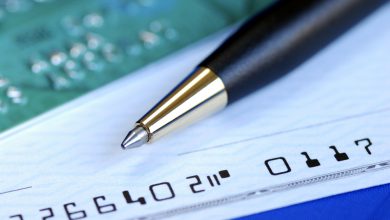Checking Accounts
What Are 6 Different Types Of Checking Accounts?
Before you open a checking account, you need to know what types of checking accounts are out there. It is important to think about an account’s charges and interest as well as features and advantages prior to applying. Here are 6 checking account options.
Regular Checking Accounts
A regular checking account allows you to deposit and withdraw money. You can use ATM’s, pay bills, purchase items and write checks. Some banks have a monthly fee to have an account with them, but most banks don’t. A regular checking account normally does not pay interest.
Premium Checking Accounts
If your checking account will have five-figures, a premium checking account may be ideal for you. This account will help you avoid paying a monthly fee, offer perks like ATM charge reimbursements, and help you earn a bit of interest. You may also get discounts on services such as a mortgage interest rate. But that does not mean a premium checking account is the best option for a five-figure balance.
Interest-Bearing Checking Accounts
Interest-bearing checking accounts provide you a return on the balance in your account each month. Some accounts pay a set interest rate but, some pay more on higher balances. The interest rate will be under the inflation rate, but it may be comparable to saving account interest rates. This provides you the very best of both worlds transactions and interest payments — all in one account.
Totally Free Checking Accounts
You may be better off using a totally free checking account, even though it pays no interest. This does not mean that all of the services linked to this account are free. You may need to pay ATM fees, overdraft charges, stop payment penalties and trade fees.
Second-Chance Checking Accounts
If a lender has closed your checking account due to an outstanding balance, but you still want a checking account this account will give you a second chance. In exchange, you might need to pay a monthly fee up to $20 and your account may have limitations that other checking accounts do not have. These accounts can be found in all 50 states through credit unions and banks. If you have maintained your account in good standing for a period of time, you will become eligible for a regular checking account.
Low Balance Checking Account
In exchange for allowing you to have an account with a low or no minimum balance, the lender may need you to do additional things that save money. For example writing a restricted number of checks per month and getting monthly statements electronically rather than by email. A few of these types of accounts may not even have check-writing privileges (allowing only online or debit-card transactions ). Also they may not permit overdrafts, rather declining any purchase that exceeds your available balance.
The Main Point
No matter your situation, there is a checking account for you — as long as you do not have a history of fraud. If you’re searching for a particular feature, begin with searching for accounts that have that feature.
But remember that checking account names are marketing labels. You should dig deeper and read the fine print before you decide which account is right for you.

